Comments / Questions (67)
![]() Werna wrote:
Werna wrote:
Thank you for your reply. But there is still something I do not understand. Please explain : 1 Edge stitch in garter stitch, 5 stocking sts, M.1. How does this come to 9 sts ?
23.01.2025 - 07:30DROPS Design answered:
Dear Werna, M.1 is a chart, such as M.2A, M.2B and M.2C and chart M.1 has 9 stitches. It's not that the edge stitches, the stocking st stitches and M.1 add up to 9, it means that M.1 has 9 stitches. We write the numbers here so that you can add up the number of stitches in the row without having to look at the charts below. Happy knitting!
25.01.2025 - 18:45
![]() Werna wrote:
Werna wrote:
I am knitting the med. It says : Work next row as follows from RS: 1 edge st in garter st, 5-5-6-7-8-8 stocking sts, M.1 (= 9 sts), 62-72-79-89-100-111 stocking sts, M.2A . Instead of 9 stitches I only have 5. What is M.2A , M.2B and C ?
21.01.2025 - 14:43DROPS Design answered:
Dear Werna, M.1 and M. 2 are the diagrams you will find at the bottom of the page; M.1 is worked over 9 sts and M.2 over 19 sts as shown in diagram, then work in M: 1 edge st in garter st, 5 stocking sts, M.1 (= 9 sts), 72 stocking sts, M.2A (= 19 sts), 72 stocking sts, M.1 (= 9 sts), 5 stocking sts and 1 edge st in garter st. Read more about diagrams here. You will here first work M.2A then repeat the rows marker with M.2B a total of 8 times (in height) then work M.2C and finish with reversed stocking stitch as explained in the written pattern. Happy knitting!
21.01.2025 - 17:12
![]() Saisha Gardner wrote:
Saisha Gardner wrote:
Help, I am very confused. I am knitting the Large size. I got to 45 cm and did all the binding off as instructed and finished off the right and left front pieces all fine. But I am left with 107 stitches on the back not 93 stitches as I should I have gone back over all the instructions again and again and cannot see where or why I have an extra 14 stitches everything was done as instructed. What has gone wrong?
16.12.2023 - 22:30DROPS Design answered:
Dear Saisha, before working each piece separately, you should have checked that all of the pieces were correctly divided. After the piece, reaches 46 cm divide as follows: 44 stitches for the front piece, cast off 10 stitches for armhole, 93 stitches for the back, cast off 10 stitches for armhole and 44 stitches for the front piece. Remember that, 1cm before dividing the piece (at the 45 cm mark) you should have cast off 7 stitches towards the mid-front in each front piece, for the neck. So you will have 14 stitches less when dividing the front pieces and back piece. Happy knitting!
17.12.2023 - 19:06
![]() Saisha Gardner wrote:
Saisha Gardner wrote:
Hi I cannot buy the buttons for this pattern anymore : 533 what size were they so I can pick a replacement? Thank you so much Saisha
17.09.2023 - 00:00DROPS Design answered:
Dear Saisha, we use 20mm buttons. Happy knitting!
17.09.2023 - 21:11
![]() Caroline wrote:
Caroline wrote:
When I've made the 8 decreases = 32 stitches in size M, it says I should be left with 161 stitches, do I discount the stitches of the leaf pattern when counting these? Thank you
15.03.2022 - 18:31DROPS Design answered:
Dear Caroline, count M.1 = 9 sts and M.2A = 19 sts when checking your number of stitches (= do not count the extra stitches increased in the leaf pattern). Happy knitting!
16.03.2022 - 09:08
![]() Manuela Meyer wrote:
Manuela Meyer wrote:
Rechtes Vorderteil: Ich verstehevnicht den Unterschied von „zur Mitte“ und „zum Hals“ hin abketten“ ! Bitte um eine Erklärung! Dankeschön
21.02.2022 - 01:21DROPS Design answered:
Liebe Frau Meyer, wenn Sie "gegen die Mitte" abketten/abnehmen sollen, sollen Sie die Maschen am Anfang der Reihe vom Hals abketten/abnehmen, dh beim rechten Vorderteil ketten/nehmen Sie am Anfang einer Hinreihe ab; beim linken Vorderteil ketten Sie bei den Rückreihen ab und nehmen Sie am Ende einer Hinreihe; Viel Spaß beim stricken!
21.02.2022 - 10:16
![]() Sylke Prager-Ngejeme wrote:
Sylke Prager-Ngejeme wrote:
Fehler bei der Maschenangabe für Gr. M: Es sollen 193 M angeschlagen werden, dann Markierung nach 47 und 99 M. Also 2x 47 M für die Voederseiten und 99 für das Rückenteil . Dies ergeben insgesamt 183 und nicht 193 M. Werde statt 72 M glatt rechts also nur 67 M stricken.
03.12.2021 - 19:29DROPS Design answered:
Liebe Frau Prager-Ngejeme, die Maschenanzahl stimmt so: 47+99+47=193 Maschen - Viel Spaß beim stricken!
06.12.2021 - 09:23Hanaa Zahran wrote:
Hi I'm fm Egypt I wish to do this pattern I need yr help to do same with double pointed needles unfortunately I can't make it with circle needles thanks
02.03.2017 - 19:42DROPS Design answered:
Dear Mrs Zahran, pattern is here worked back and forth on needle, only edges around armholes are worked in the round. Please find here how to adjust a pattern on straight needle. For any further assistance you are welcome to contact your DROPS store even per mail or telephone. Happy knitting!
03.03.2017 - 10:06
![]() Katja wrote:
Katja wrote:
Habe gerade die schöne Weste angefangen, aber finde in der Anleitung nicht, wie ich die Rückseite des Musters stricken muss?!
12.04.2016 - 17:34DROPS Design answered:
Liebe Katja, es sind Hin-und Rückreihen dargestellt.
12.04.2016 - 19:16Larala wrote:
Really pretty pattern, but not well written. I'm doing the XL size. At 45 cm, there are 223 st. If I bind off as indicated, by the time I get to 47 cm, I have only 199 st left. But the pattern shows 50+103+50=203. It doesn't make sense, as I would have to bind off every over row instead of every row to get there. At what point does the 50/103 st count starts? If that takes into account the armhole decrease, shouldn't the markers be at 55 on each side between 45 and 47 cm. Please clarify.
21.02.2016 - 22:29DROPS Design answered:
Dear Larala, when piece measures 45 cm you start dec for neckline on both sides (see under right front piece, ie: 8 sts 1 time + 2 sts 3 times, 1 st 3 times ..x 2 sides), when you bind off for armholes, you will have already bound off/dec for neckline on both front pieces, that's why you have less sts. Happy knitting!
22.02.2016 - 11:10
Misty vines |
|||||||||||||||||||||||||||||||
 |
 |
||||||||||||||||||||||||||||||
Knitted DROPS sleeveless top with leaf pattern in ”Karisma”. Size S - XXXL.
DROPS 125-2 |
|||||||||||||||||||||||||||||||
|
GARTER ST (back and forth on needle): K all rows. GARTER ST (in the round): K 1 round, P 1 round. DECREASING TIP (applies to the side on body piece): Make all dec from RS. Beg 2 sts before marker: K2 tog, slip 1 st as if to K, K1, psso. INCREASING TIP (applies to the side on body piece): Make all inc from RS. Inc 1 st by picking up st from previous row and K this. PATTERN: See diagram M.1 and M.2. Diagram shows the pattern from RS and row 1 in diagram = RS. -------------------------------------------------------- SLEEVELESS TOP: Worked back and forth on circular needle from mid front. BODY PIECE: Cast on 173-193-209-231-255-277 sts on circular needle size 3.5 mm with Karisma. Work GARTER ST back and forth on needle – see above. When piece measures 4 cm change to circular needle size 4 mm. Now insert 2 markers 42-47-51-57-63-68 sts in from each side = 89-99-107-117-129-141 sts between markers on back piece. Work next row as follows from RS: 1 edge st in garter st, 5-5-6-7-8-8 stocking sts, M.1 (= 9 sts), 62-72-79-89-100-111 stocking sts, M.2A (= 19 sts), 62-72-79-89-100-111 stocking sts, M.1 (= 9 sts), 5-5-6-7-8-8 stocking sts and 1 edge st in garter st. Continue pattern like this – NOTE: After 1 vertical repeat of M.2A, continue in M.2B, work 8-8-8-8-9-9 vertical repeats of M.2B, then work 1 repeat of M.2C and then continue in reverse stocking st on the 19 sts in M.2 up to neckline dec. Work 7 vertical repeats of M.1 for all sizes, then continue in reverse stocking st on the 9 sts in M.1 up to neckline dec. REMEMBER THE KNITTING TENSION! AT THE SAME TIME When piece measures 5 cm dec 1 st each side of both markers (= 4 dec sts) – See DECREASING TIP! Repeat the dec on every 3-3-3.5-3.5-3.5-4. cm a total of 8-8-7-7-7-6 times = 141-161-181-203-227-253 sts. When piece measures 31-32-31-31-32-31 cm inc 1 st each side of both markers (= 4 inc sts) – See INCREASING TIP! Repeat the inc on every 2-2-3-3-4-4.5 cm a total of 6-6-5-5-4-4 times = 165-185-201-223-243-269 sts. Note! When piece measures 45 cm dec for the neck is starting on all sizes. See explanation under right front piece. When piece measures 44-45-46-47-48-49 cm work next row as follows: work 36-41-44-50-54-60 sts as before (= front piece), cast off 8-8-10-10-12-12 sts for armhole (i.e. 4-4-5-5-6-6 sts each side of marker), work 77-87-93-103-111-125 sts (= back piece), cast off 8-8-10-10-12-12 sts for armhole and work the remaining 36-41-44-50-54-60 sts as before (= front piece). Complete each piece separately. BACK PIECE: = 77-87-93-103-111-125 sts. Continue as before in stocking st and M.2 on the middle 19 sts AT THE SAME TIME cast off for armhole at the beg of every row each side as follows: 3 sts 0-0-0-1-1-2 times, 2 sts 3-5-6-7-8-10 times and 1 st 5-5-5-4-5-4 times = 55-57-59-61-63-65 sts (includes 1 edge st each side). Continue pattern as before. When piece measures 61-63-64-66-68-69 cm cast off the middle 31-33-27-29-29-31 sts for neck and complete each shoulder separately. Cast off for neckline at the beg of every row from neck: 2 sts 1-1-2-2-2-2 times and 1 st 2-2-3-3-3-3 times = 8-8-9-9-10-10 sts left on shoulder. Cast off when piece measures 64-66-68-70-72-74 cm. RIGHT FRONT PIECE: = 36-41-44-50-54-60 sts. Continue as before in stocking st and M.1, AT THE SAME TIME cast off for armhole at the beg of every row from the side (i.e. on every row from WS) as described for back piece. AT THE SAME TIME when piece measures 45 cm for all sizes cast off 6-6-7-8-9-9 sts towards mid front, i.e. from RS for neck. Cast off to shape the neckline at the beg of every row from mid front as follows: 2 sts 3 times and 1 st 3 times, then cast off at the beg of every other row from mid front: 1 st 2-3-2-3-2-2 times. After all dec for armhole and neckline are complete there 8-8-9-9-10-10 sts left on needle. Cast off as described for back piece. LEFT FRONT PIECE: Like right front piece, but mirrored, i.e. cast off for armhole on every row from RS and cast off for neck from WS. ASSEMBLY: Sew shoulder seams. SLEEVE EDGE: Pick up from RS approx 84-106 sts round armhole inside 1 edge st on circular needle size 3.5 mm. Work GARTER ST in the round – see above. When edge measures approx 2 cm cast off. Repeat round the other armhole. RIGHT FRONT BAND: Pick up from RS approx 86-102 sts along right front piece inside 1 edge st on circular needle size 3.5 mm with Karisma. Work garter st back and forth on needle. After 2.5 cm make 6 buttonholes evenly distributed – place the top buttonhole approx 1 cm from neckline and the bottom one 2-3 cm from bottom edge. 1 BUTTONHOLE = cast off 1 st and cast on 1 new st on next row. Cast off when front band measures 4 cm. LEFT FRONT BAND: Like right front band but without buttonholes. Sew buttons on left front band. NECKLINE: Pick up from RS approx 140 –170 sts round neck (also pick up on front bands) on circular needle size 3.5 mm. Work garter st back and forth on needle until neckline measures approx 2 cm and cast off. |
|||||||||||||||||||||||||||||||
Diagram explanations |
|||||||||||||||||||||||||||||||
|
|||||||||||||||||||||||||||||||
 |
|||||||||||||||||||||||||||||||
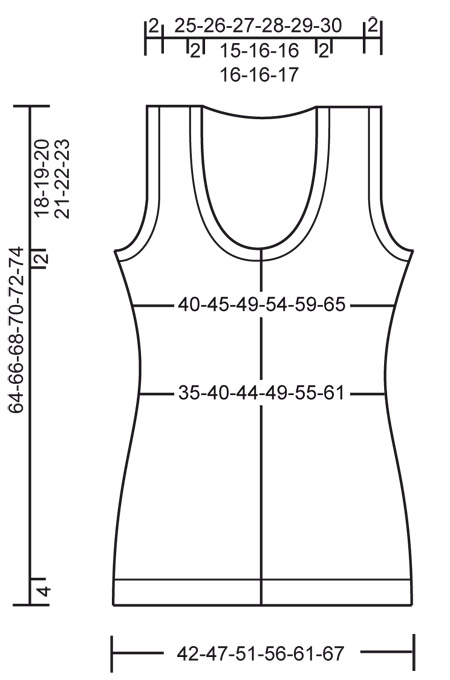 |
|||||||||||||||||||||||||||||||
Have you finished this pattern?Tag your pictures with #dropspattern or submit them to the #dropsfan gallery. Do you need help with this pattern?You'll find 20 tutorial videos, a Comments/Questions area and more by visiting the pattern on garnstudio.com. © 1982-2026 DROPS Design A/S. We reserve all rights. This document, including all its sub-sections, has copyrights. Read more about what you can do with our patterns at the bottom of each pattern on our site. |
|||||||||||||||||||||||||||||||








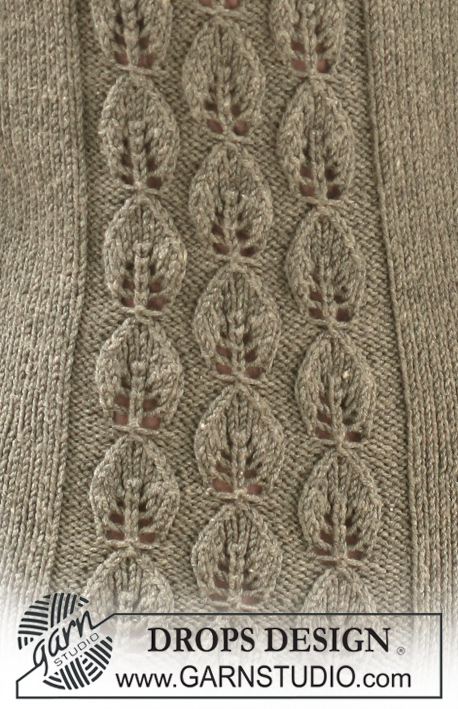









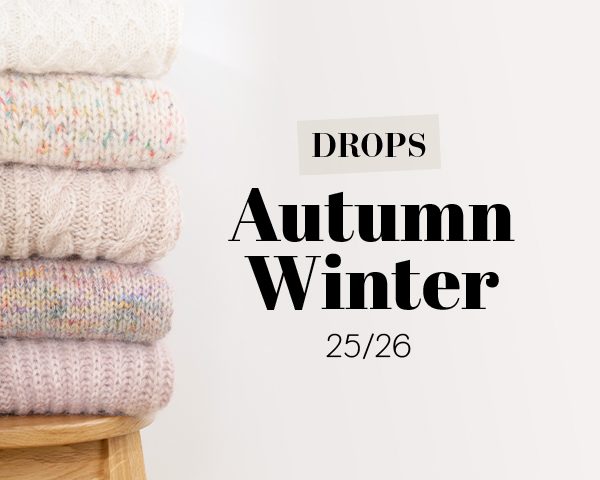














































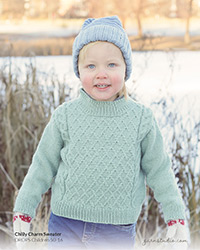
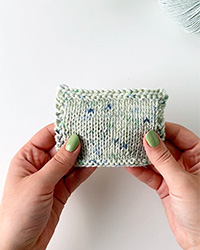

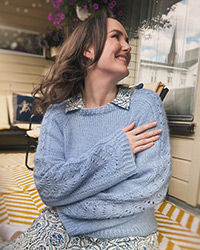

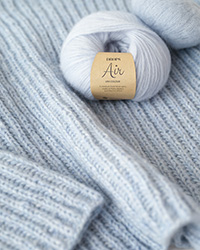
Post a comment to pattern DROPS 125-2
We would love to hear what you have to say about this pattern!
If you want to leave a question, please make sure you select the correct category in the form below, to speed up the answering process. Required fields are marked *.